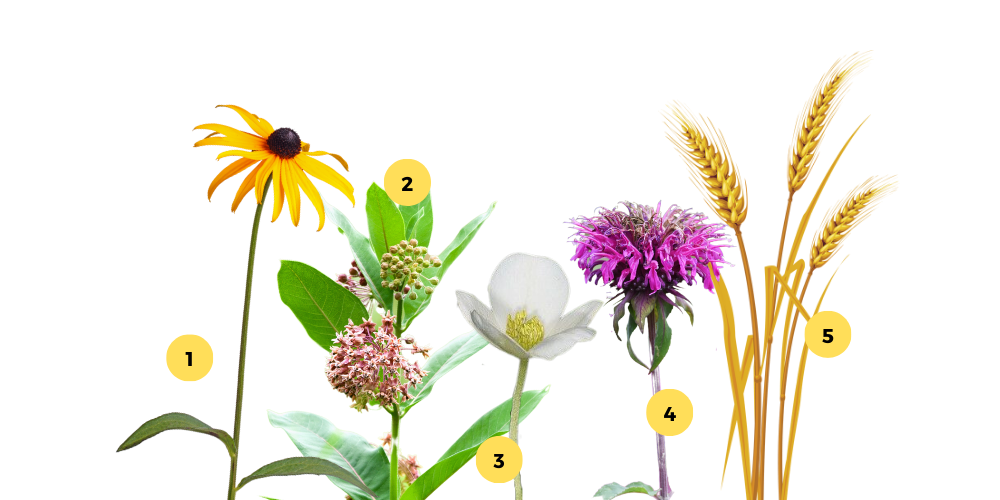Did you know that you can significantly impact the biodiversity of your neighbourhood by simply allocating a small section of your turf lawn to becoming a wildflower lawn? A wildflower lawn is an alternative to the traditional turf lawn and is made up of native flowers, plants, and grasses that grow well together. It’s a specifically designed community of diverse plant species — annuals, biennials, and perennials — that thrive in your region and growing conditions. As spring approaches, it's a great time to consider a wildflower lawn.
There are many amazing benefits to creating a wildflower lawn! Here are our top 5 reasons we recommend transitioning to a wildflower lawn this year.
1. Biodiversity: Wildflower lawns provide a much-needed habitat for a range of pollinators, such as bees, butterflies, and other insects that are experiencing habitat loss. This helps to support local ecosystems and promote biodiversity, bringing more birds to your backyard!

2. Low Maintenance: Once established, wildflower lawns require little maintenance as they do not need mowing, weeding or seeding as often as turf lawns. This saves time and money.
3. Water Conservation: Never again will you have to worry about your lawn being brown and crispy! Wildflower lawns require considerably less water than turf lawns, which helps conserve water. This is particularly beneficial in areas with water restrictions or drought conditions.
4. Aesthetically Pleasing: Wildflower lawns are beautiful and colourful, providing a natural and unique aesthetic to your home's landscape.
5. Carbon Sequestration: Wildflowers help to capture and store carbon dioxide, a greenhouse gas that contributes to climate change.
Now you may say, "that's wonderful, but how do I start? What do I plant?" Here in Eastern Ontario, there are many native grasses, shrubs, trees and flowers that you can start planting to build your wildflower lawn.

1. Black-eyed Susan: This wildflower is a popular choice for pollinator gardens and can attract butterflies, bees, and other insects.
2. Milkweed: This plant is critical for the survival of monarch butterflies, as it is the only food source for monarch caterpillars.
3. Canada Anemone: Little, white, cup-shaped flowers with yellow butter centres sit atop vivid emerald foliage on this popular Ontario native plant. It spreads easily, is highly drought-tolerant, and grows well in either sun or shade.
4. Wild Bergamot: This plant produces clusters of purple flowers that attract a variety of pollinators, including bees, butterflies, and hummingbirds. It prefers full sun to partial shade and well-drained soil.
5. Canada Wild Rye: This grass is a cool-season grass that is native to Eastern North America. It is drought-tolerant and can grow in various types of soil , making it an excellent choice for landscaping.
By planting a variety of native plants, you can create a diverse ecosystem that supports a range of wildlife, including pollinators, birds, and other species. When choosing plants, be sure to research their specific growing requirements and choose plants that are appropriate for your local conditions.
Conclusion
Start small! It can feel overwhelming to try and replant your entire yard; we get that. Start with a corner of your yard, plant a few flowers, some shrubs, grab a bird feeder and watch as your backyard transforms into an oasis of bees, butterflies, birds and other wildlife.
When we support nature, nature will support us.
Got a question or tip on starting your natural lawn? Drop it below!


Comments (1)